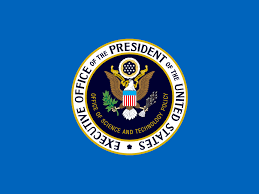
On August 25th, 2022 the White House Office of Science and Technology Policy (OSTP) issued a memorandum from Dr. Alondra Nelson, head of OSTP, to “Heads of Executive Departments and Agencies” on “Ensuring Free, Immediate, and Equitable Access to Federally Funded Research.” Known as the “Nelson memo” this OSTP policy updates and expands the 2013 “Memorandum on Increasing Access to the Results of Federally Funded Research” (known as the “Holdren memo“) in significant ways. Details of how each federal agency will implement specifics of this new policy will unfold in the next 6-24 months, but here are some “quick takes”:
- By the end of 2024, all federally funded research will be immediately available to the public at no cost, removing the previous 12-month embargo;
- All 400+ federal agencies, including the National Endowment for the Arts and the National Endowment for the Humanities, are covered by the policy, expanding beyond the 20 or so Federal agencies with $100 million annual R&D expenditures covered by the 2013 policy;
- The policy makes peer reviewed scholarly publications and the underlying data of that research publicly available at no cost. This covers all articles and their data, and individual agencies may also choose to include book chapters, editorials and conference proceedings under their guidelines;
- Existing inequities for underserved communities and early career researchers in their access to research publication are explicitly centered and addressed;
- The policy calls for the use of standardized metadata, persistent identifiers (PIDs) for researchers and research outputs, and machine-readable formats, thus improving how the research is discovered and shared;
- Cost coverage for publications and data is addressed, and authors and/or their institutions are not expected to pay an author publication charge (APC) for compliant publication. The OSTP briefed Congress on cost implications of the policy with the Economic Landscape of Federal Public Access Policy report;
- The policy takes steps to ensure scientific and research integrity and implementation of those provisions go into effect starting in 2027.
For more information on the new OSTP policy, see 2022 Updated OSTP Policy Guidance from SPARC and see responses to the policy posted by the White House.
